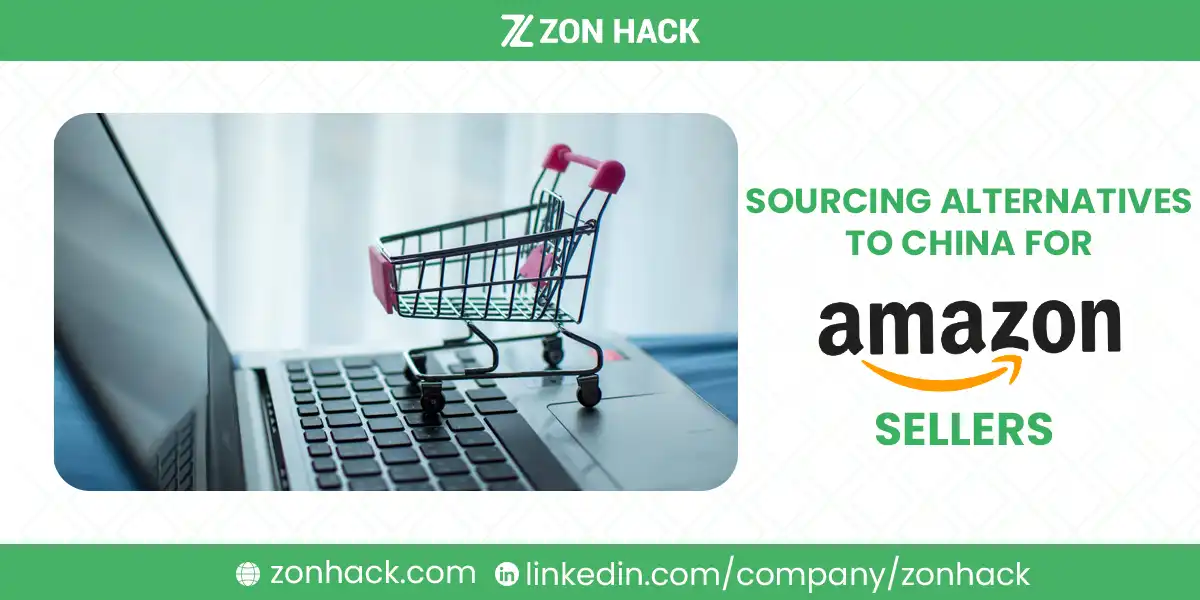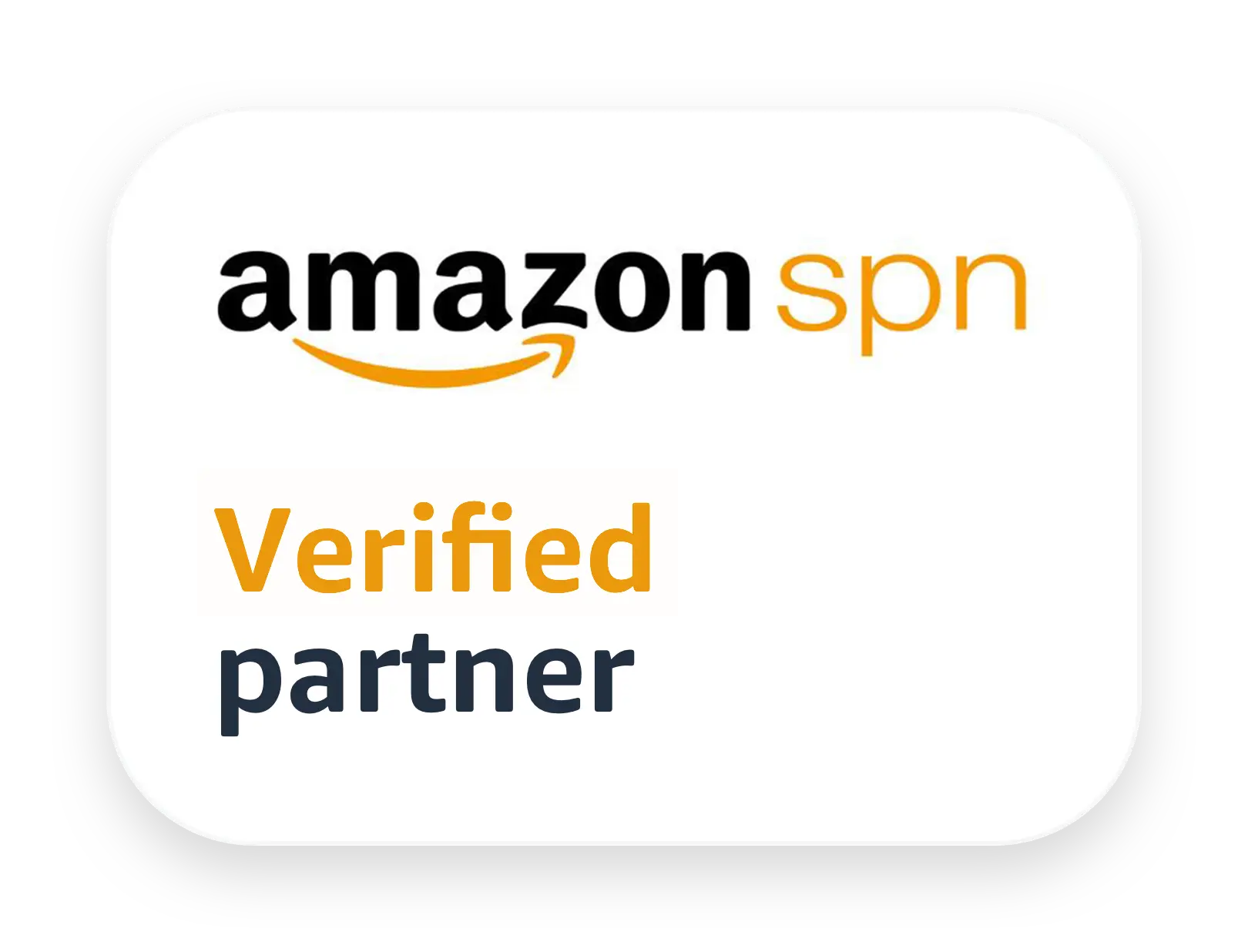The global sourcing game has changed, and smart Amazon sellers are adapting fast.
If you’re still relying on China for manufacturing, you’ve likely felt the pinch: rising tariffs, increasing lead times, stricter regulations, and geopolitical uncertainty. What used to be the unbeatable low-cost option has now become a risky bet for many private label and wholesale sellers.
So, where do you go instead?
In this article, we’ll explore the top sourcing alternatives to China in 2025, based on real trade data, cost trends, logistics, and supplier reliability. Whether you’re launching your first product or scaling your 7-figure brand, the goal is simple: lower risk, keep quality high, and preserve your margins.
Why Are Sellers Moving Away from China in 2025?
This isn’t just a passing trend—it’s a massive supply chain reset.
In early 2025, the U.S. sharply increased tariffs on a broad category of Chinese imports, some jumping as high as 125%, especially on electronics, home goods, and certain chemicals. Many Amazon sellers saw their landed cost nearly double overnight, destroying their margins and forcing them to pause listings, raise prices, or cut PPC budgets.
The numbers paint a clear picture.
According to a Bloomberg report, over $40 billion worth of U.S. imports were hit by the new tariff wave in Q1 2025 alone. That includes many everyday Amazon categories—kitchen products, home décor, consumer electronics, beauty tools, and more.
But it’s not just about tariffs. Sellers are also dealing with:
- Unpredictable factory closures due to Chinese domestic lockdowns and labor shortages
- Extended lead times—up to 90–120 days door-to-door
- Increased freight and customs delays
- IP theft and compliance concerns for brands and private labelers
This has opened the door to a global sourcing shake-up. Let’s dive into the best alternatives.
1. Mexico
If there’s one clear winner from China’s sourcing troubles, Mexico is it.
Just a few years ago, most Amazon sellers didn’t consider Mexico a viable option. Fast forward to 2025, and Mexico is now one of the fastest-growing sourcing hubs for U.S. eCommerce. Thanks to the USMCA (United States–Mexico–Canada Agreement), many goods shipped from Mexico to the U.S. enter duty-free—a massive win for your bottom line.
But the benefits go far beyond tariffs.
- Lead times are drastically shorter. Ground freight from Mexico can reach the U.S. in as little as 4–7 days, compared to 30–60 days from China.
- Communication is easier, and site visits or audits are doable without a 20-hour flight.
- Freight costs are lower. In 2024, average container shipping costs from China to the U.S. West Coast were around $6,000–$8,000 per 40-foot container. From Mexico, it’s often under $2,500 for the same route.
Top Products from Mexico:
Electronics, home appliances, kitchenware, automotive accessories, supplements, and even some textiles.
Why It Works for Amazon Sellers:
The proximity to the U.S. enables faster restocking, more agile launches, and less cash tied up in transit.
“Shifting 40% of our product line to Mexico cut our lead time by 22 days and reduced landed cost by 18%,” — ZonHack client (2024 case study)
2. India
India is not a ‘China clone’—and that’s a good thing.
What India offers is affordable labor, deep craftsmanship, and strong English communication. It shines in specific categories where quality and creativity matter just as much as cost.
Think:
Textiles, apparel, home furnishings, leather goods, handmade jewelry, Ayurvedic health products, and organic skincare.
Thanks to the Make in India initiative, India has invested heavily in manufacturing zones, export hubs, and logistics infrastructure. The textile sector alone employs over 45 million people and exported $60 billion in goods in 2023, per India’s Ministry of Textiles.
India is also one of the few sourcing markets with a large English-speaking workforce, making negotiations, compliance checks, and ongoing quality control much smoother than other low-cost countries.
Amazon sellers benefit from:
- Low MOQs (minimum order quantities) for niche or handmade products
- Excellent craftsmanship, especially in fashion and home categories
- Growing ecosystem of private label-friendly suppliers
But it’s not perfect. Infrastructure lags in some rural areas, and lead times can be 30–45 days or longer, depending on the region.
Still, for categories where brand perception, natural ingredients, or artisan style matter, India outperforms nearly everyone else.
3. Vietnam
Vietnam has been on the rise for years, and it’s not slowing down.
With stable government support, strong FDI (foreign direct investment) from brands like Samsung, Nike, and Adidas, and modern port infrastructure, Vietnam is a strategic sweet spot between China’s scale and India’s affordability.
In 2024, Vietnam exported over $39 billion in electronics and $28 billion in textiles, with continued growth expected in 2025.
Best for Amazon Sellers:
Athletic wear, outdoor furniture, headphones, computer accessories, and kitchen gadgets.
Why it works:
Vietnam provides scalable production with competitive labor costs and access to major trade deals like CPTPP and EVFTA, which reduce import duties and streamline cross-border movement.
Many of ZonHack’s clients have successfully transitioned portions of their product lines to Vietnamese suppliers. The quality has remained high, with fewer regulatory headaches than China, and lead times—though not as fast as Mexico—are usually within 30–40 days.
For Amazon sellers in fast-moving categories like sports or electronics, Vietnam is a strong Plan A or Plan B.
4. Turkey
Sourcing from Turkey isn’t just for European brands anymore.
With its strategic location bridging Europe and Asia, modern textile industry, and growing export focus to the U.S., Turkey is quickly becoming a reliable China alternative—especially for sellers in apparel, home goods, and packaged food.
What makes Turkey unique?
- Access to the EU Customs Union, which makes sourcing smoother for European sellers
- Lead times to Europe are under 10 days, and to the U.S. around 14–18 days
- High standards for labor compliance, quality, and ethical manufacturing
The country is also investing heavily in logistics and transport infrastructure, aiming to become a regional logistics hub by 2053. Sellers can benefit from shorter supply chains, strong IP protection, and low minimum order quantities for textiles and personal care items.
Ideal for Amazon Sellers:
Fashion-forward products, beauty tools, artisanal home décor, and gourmet food items.
Turkey won’t be the cheapest option—but for speed, flexibility, and mid-volume SKUs, it checks a lot of boxes.
5. Bangladesh
If you’re in the mass-market apparel space, Bangladesh is likely already on your radar.
It’s the second-largest exporter of garments in the world, behind only China. In 2023, Bangladesh exported $42 billion in apparel, mainly to the U.S., EU, and UK markets.
Labor costs are among the lowest globally, and factories are capable of massive production volumes—perfect for basics like T-shirts, leggings, kidswear, and budget fashion.
But there are trade-offs.
Quality control can be inconsistent if not monitored closely. Infrastructure outside major zones is still developing. And lead times can stretch if you’re not working with experienced export houses.
Still, for Amazon sellers needing high-margin basics or fast inventory turnover, Bangladesh remains a viable low-cost option—especially in a post-tariff world.
Want Help Sourcing Smarter?
At ZonHack, we’ve helped 300+ brands transition their supply chains away from China—without sacrificing quality, timelines, or profitability.
Whether you need sourcing agents in Mexico, textile manufacturers in India, or factory audits in Vietnam, we make it easy to diversify, test, and scale across multiple regions.
→ Book a Free Supply Chain Strategy Session today
6. Pakistan
Pakistan flies under the radar for many, but it’s a major global exporter of cotton, denim, towels, leather goods, and sportswear.
In fact, it’s the third-largest exporter of towels globally, and home to top-quality cotton mills. Major brands like Adidas and Puma source gear here due to strong craftsmanship and lower labor costs than neighboring India.
Why consider Pakistan?
- High quality at lower costs, especially in textiles
- English-speaking supplier base
- Solid manufacturing heritage in cotton, canvas, and leather
- Large export hubs in cities like Karachi, Lahore, and Faisalabad
The challenge? Logistics and stability. While lead times are manageable (around 30–40 days), shipping routes can be more complex than from China or Vietnam. However, for sellers in fashion, accessories, or bags, Pakistan offers exceptional margins with room for customization.
7. Poland
Poland may not be the first name that comes to mind, but it’s become a serious contender for home goods, furniture, appliances, tools, and kitchenware.
It’s the European Union’s manufacturing powerhouse, offering:
- Skilled labor and tight compliance with EU and U.S. standards
- Excellent quality for woodworking, ceramics, and metal products
- Smooth shipping logistics across Europe and to the U.S.
For Amazon sellers targeting premium markets, Poland is a source of low-defect, high-quality goods, particularly in categories like flatware, cookware, and bathroom accessories.
Lead time: 10–20 days to the EU, 20–30 days to the U.S.
MOQ: Moderate
Tariffs: Minimal to U.S., none to EU
Pricing: Higher than Asia, but competitive compared to U.S.
8. Portugal
Portugal is a hidden gem for sustainable brands. It specializes in:
- Organic cotton, linen clothing, and leather goods
- Cork products, which are a national export
- Artisanal, handmade goods — perfect for Etsy-style Amazon listings
Portugal’s edge lies in ethical labor, low MOQs, and fast EU delivery. For eco-conscious sellers or those using Amazon’s Climate Pledge Friendly badge, Portugal offers a story as strong as its product.
Best for: Apparel, shoes, bags, eco home décor
Logistics: 2–3 weeks to U.S., faster to EU
Notes: Higher price point but low-risk and high brand appeal
9. South Korea
Looking to sell in K-beauty, personal care, or smart gadgets? South Korea should be on your radar.
It’s one of the most innovative product ecosystems in Asia, known for:
- Skincare and cosmetics (sheet masks, serums, moisturizers)
- Home gadgets, especially kitchen and lifestyle electronics
- Stationery and lifestyle products with unique aesthetics
Many Korean suppliers are already familiar with U.S. and Japanese markets and offer strong packaging, branding, and fast turnaround.
Best for: Skincare, gadgets, kitchen tech, personal electronics
Challenge: Pricing is higher; suited to premium positioning
Shipping: 4–7 days air freight, 20–30 sea freight
10. Egypt
Egypt has quietly been scaling its exports in cotton textiles, stoneware, glass, and wicker/rattan home goods. With a strategic position near Europe and the Middle East, it’s attractive for those selling:
- Egyptian cotton sheets and towels
- Decorative stoneware and vases
- Natural home décor (baskets, woven mats)
Labor costs are low, and its proximity to both Europe and Africa gives sellers flexible shipping options.
Best for: Bedding, bathroom sets, home accents
Notes: Requires thorough vetting, but potential is rising
Shipping: 10–20 days to Europe, 30+ days to the U.S.
What About the U.S. and Domestic Manufacturing?
Yes, you can source within the U.S., and for some sellers, this makes perfect sense.
It’s especially viable if you sell:
- Custom or handmade goods
- Perishables, supplements, or regulated consumables
- Heavy or bulky items with high freight costs
- High-ticket products where “Made in USA” is a selling point
However, the trade-off is cost. Labor and manufacturing expenses are significantly higher in the U.S., and MOQs tend to be large. Still, for premium brands or fast-turn SKUs, U.S. sourcing offers faster shipping and tighter quality control.
How to Vet Suppliers Outside China
Sourcing from new markets means you must do more homework. Factories in Vietnam, India, or Turkey don’t operate at the same digital fluency as Chinese suppliers on Alibaba.
Here’s what to prioritize:
1. Start with Export-Focused Directories
Use IndiaMART (India), Alietc, ExportHub, or Global Sources filtered by country.
2. Ask for Compliance Docs
Ensure they can provide ISO certificates, BSCI, Sedex, or US/EU export approvals depending on your niche.
3. Test Before Scaling
Order small test runs. Ship samples to 3PLs like ZonHack’s prep centers to inspect before sending to Amazon FBA.
4. Use Freelance QA & Audit Agents
Hire local freelancers or agencies to audit the factory, inspect shipments, and review contracts. Fiverr, Upwork, and ZonHack’s supplier partner network offer support in key regions.
Freight, Customs, and Shipping from New Regions
Sourcing outside China doesn’t just change your supplier. It changes your entire logistics chain.
- Mexico and U.S.: Road freight and courier logistics are fast and affordable. Great for just-in-time inventory.
- India & Vietnam: Ocean freight is standard. Lead time ranges from 30–45 days port to port.
- Turkey & Pakistan: Often use air freight for smaller orders. Sea freight via the Suez Canal is slower (but reliable).
Pro tip: Always work with a freight forwarder experienced in non-China routes. ZonHack helps connect you with vetted partners based on region, niche, and Amazon warehouse preferences.
Costs Comparison by Country (2025 Snapshot)
Here’s a simplified snapshot comparing average production costs, freight, and lead time from key countries:
| Country | Labor Cost (per hour USD) | Avg. Lead Time (days) | Avg. MOQ | Tariff to U.S. | Notes |
| China | $6.50 | 45–60 | Moderate | High (15–125%) | Still scalable, but costly |
| Mexico | $4.80 | 4–7 (ground) | Low–Med | 0% (USMCA) | Fastest & cheapest logistics |
| India | $2.20 | 35–45 | Low | Low (0–5%) | Great for handmade, organic |
| Vietnam | $3.50 | 30–40 | Moderate | Moderate (5–15%) | Balanced sourcing option |
| Turkey | $4.90 | 14–20 | Moderate | Moderate | Strong in textiles, ceramics |
| Pakistan | $1.50 | 30–45 | Low–Med | Low (0–5%) | Textiles, leather, and towels |
Frequently Asked Questions (FAQs)
Is China still a good sourcing option in 2025?
For some sellers, yes—especially if you have established relationships and scale. But for new sellers or those in tariff-affected categories, alternatives like Mexico or India may be safer and more cost-effective.
Which country is best for Amazon FBA private label brands?
It depends on your product. India for artisan and organic goods. Vietnam for electronics. Mexico for fast-moving consumer products. Pakistan for fashion.
How do I find suppliers in these countries if they’re not on Alibaba?
Use regional sourcing platforms like IndiaMART, ExportHub, and local trade directories. You can also partner with agencies like ZonHack that specialize in sourcing outside China.
Are lead times really shorter in Mexico?
Yes. Mexico-to-U.S. delivery via ground freight is often under a week, especially compared to the 30–60 day sea route from Asia.
How do I manage quality control overseas?
Hire independent QC agents, ask for detailed samples, or use ZonHack’s prep and inspection services to verify before FBA.
Bottom Line
In 2025, diversifying your sourcing beyond China isn’t just smart—it’s necessary.
Whether you’re trying to reduce tariffs, shorten lead times, or avoid regulatory disruptions, there are now more viable options than ever before. Mexico, India, Vietnam, Turkey, and Pakistan are all strong sourcing partners—if you know where to look and how to manage the relationship.
ZonHack’s global sourcing team helps Amazon sellers discover, vet, and manage suppliers in over 12 countries. From Mexico-based kitchen goods to handmade Indian textiles, we help brands reduce costs, streamline lead times, and avoid sourcing disasters.
Ready to explore China-free sourcing?
Contact ZonHack for a custom sourcing roadmap tailored to your niche, product, and growth goals.




